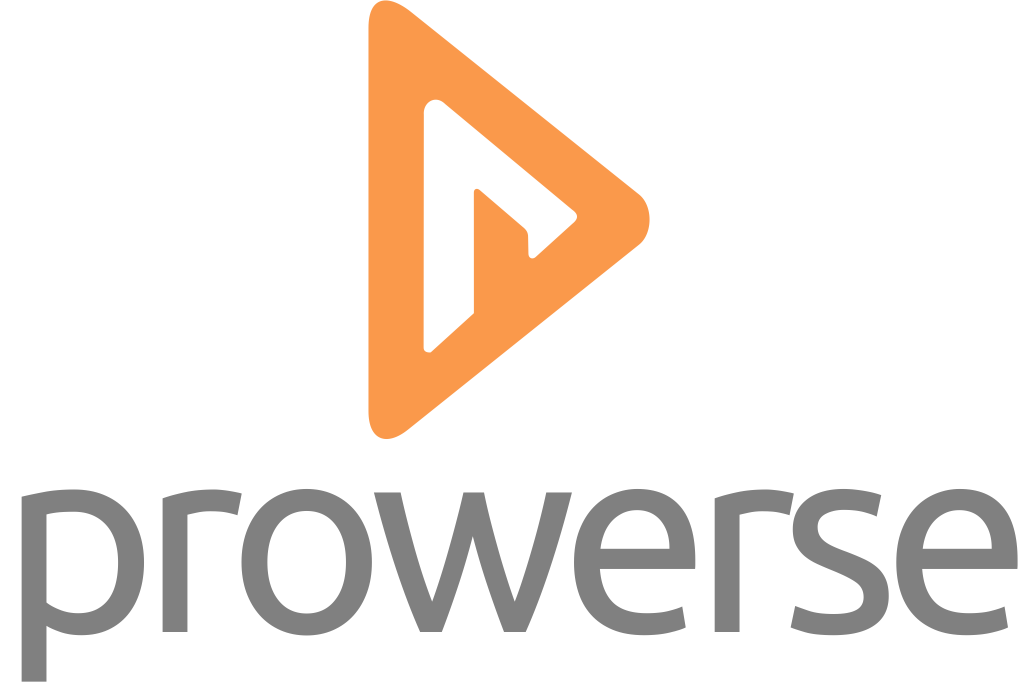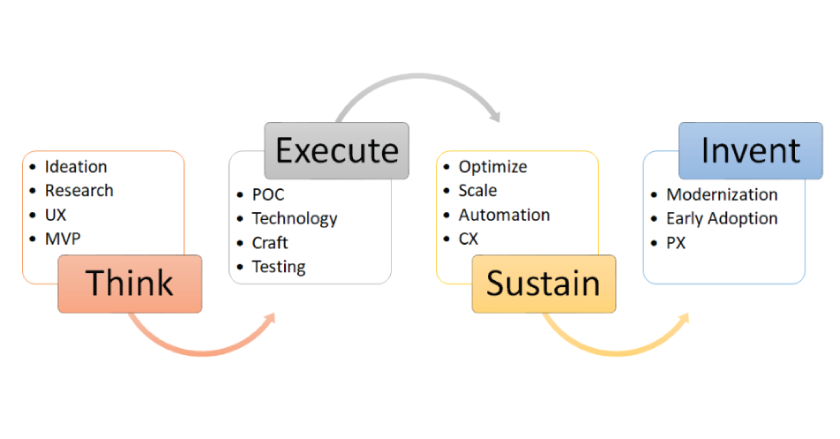Effective product engineering strategy is crucial for businesses for several reasons. It enables the development of products that outperform competitors and responds quickly to market demands.
Digital Product Engineering can be briefly staged in four major phases on product journey.
Think
It is very essential to define core pain areas which the product is trying to resolve. Research to get to know whom you are designing for, what are the users trying to achieve, what are pain points and how to fix it. Direct interaction with users, surveys & complains of competitors are key methods to find out pain areas. This phase usually ends up with pile of problems, struggling areas & challenges faced by users. One can easily create ultra large problem definition out of it. Next, it is to churn data of inputs to figure out the most obvious & generic problems faced by all users. Thus, removing all clutters & moving inch closer to achieve Minimum Viable Product definition. Next, it is to prepare rough draft of MVP. Up next, UX prototype gets ready. This has user journey through the system. Many times, a complete set of wireframes can be designed.
Execute
Execution starts with building POC. A Proof of Concept (POC) is a small exercise to test the product idea. The aim behind POC is to show the functionality and to verify that the proposed solution can be achieved with technology. Technology stack plays a key role at every stage of product development. In early days, the primary goal is to be launch the MVP as quickly as possible. Any language/framework that helps put together a working prototype in the shortest possible time should be a good fit. Next is to test the MVP. There are multiple ways testing can be approached. It usually starts with testing of concept as a whole and later details in to the testing of features, user flow & visual design. At this moment, the product is ready for the launch.
Sustain
Once the product is accepted by targeted users, the especially important phase of sustainability starts. There are many paradigms of sustainability. One way is to continuously optimize technical implementation to keep product performance with ever-increasing number of users. It can be shorter response times, improved UX, getting technical architecture in place or an efficient data access engine. With many users comes many feature requests. It is very apt to completely test out the product with every build release. These tests are known as regressions and usually needs to be automated with no-code or code-less testing frameworks. This phase is for infinite duration. One must have sustainability strategy to keep product ever ready to meet market demands. Lastly, many teams invest efforts to set up fantastic customer happiness teams. This team becomes customer advocate within product teams.
Invent
Product need to reinvent itself every few years to stay competitive, which results in different types of modernization. These activities typically involve adding new features, re-architecting the product for better technology offering and cloud enablement. Upgrading the user interface and mobile experience can be undertaken as product modernization activity. Early adopting Big Data and Machine Learning algorithms to get data-driven, actionable business insights. Analyzing historical data to make right predictions about the future can help the product to stay ahead of competitors.
Prowerse Advantage
Prowerse team has some exceptional product engineering talents with proven industry experience. We are out to make your digital products a lot better #RightFirstTime.

